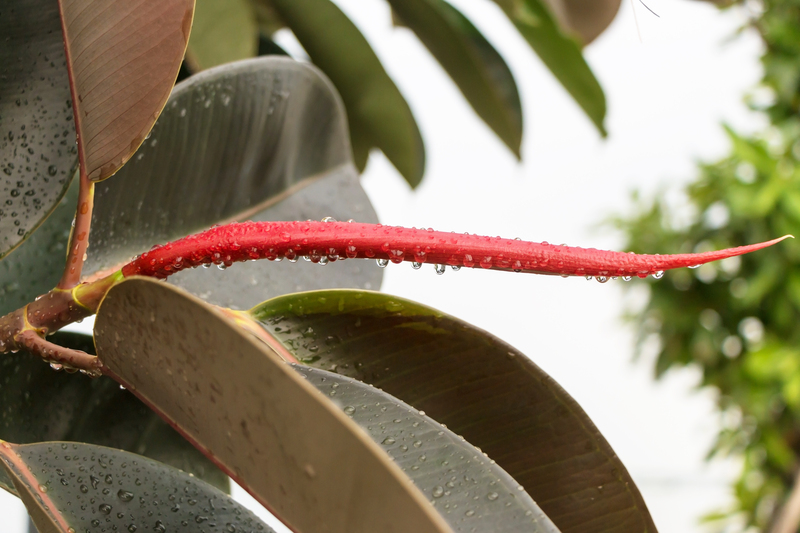Holistic Lawn Care Approaches to Minimize Summer Drought Risk
Summer droughts pose significant challenges to maintaining a lush, green lawn. As temperatures rise and rainfall becomes scarce, many homeowners are seeking comprehensive and sustainable lawn care solutions. A holistic lawn care approach involves balancing the needs of turf, soil, ecosystem, and climate to foster resilience against drought stress. In this article, we'll explore science-backed strategies, eco-friendly techniques, and best practices to minimize drought risk and promote a vibrant landscape all season long.
Understanding Holistic Lawn Care
A holistic approach to lawn care extends beyond routine mowing and watering. It integrates environmentally conscious methods, soil health, biodiversity, and water-wise strategies to create a sustainable lawn that thrives, even in adverse conditions. Unlike conventional lawn care, which often relies heavily on synthetic fertilizers and frequent irrigation, holistic methods prioritize the well-being of the entire ecosystem, including the soil, beneficial microbes, native plants, and pollinators.
Why Is Holistic Lawn Care Essential for Drought Resilience?
- Enhances Soil Quality: Healthy, organic-rich soil retains moisture more efficiently during drought.
- Supports Biodiversity: Diverse lawns are less prone to disease, pests, and water stress.
- Reduces Water Needs: Proper cultural practices minimize dependency on artificial irrigation.
- Builds Long-Term Resilience: Deep-rooted, well-adapted turf and integrated plantings withstand dry spells better.

Key Components of Drought-Resistant Holistic Lawn Care
1. Soil Health Improvement
The foundation of a resilient lawn is healthy soil. Soil organic matter, such as compost or well-decomposed manure, enhances water retention and supports microbial life.
- Test Your Soil: Begin with a soil test to determine nutrient levels, pH, and soil texture. This helps guide targeted amendments for optimal plant health.
- Regular Compost Addition: Apply high-quality compost annually to build soil structure and increase its water-holding capacity.
- Mulching: Use grass clippings or shredded leaves as mulch to insulate soil and reduce surface evaporation.
2. Smart Water-Wise Irrigation
During drought-prone summers, it's vital to optimize water use. Employ efficient irrigation practices and make each drop count with these holistic lawn watering strategies:
- Deep, Infrequent Watering: Water deeply (about 1 inch per week, early in the morning), but less often, to encourage deep root development.
- Drip or Soaker Hoses: These targeted methods deliver water directly to the root zone, reducing waste and evaporation.
- Rain Barrels & Reclaimed Water: Collect rainwater or use graywater (where legal) to irrigate lawns sustainably.
- Check System Efficiency: Regularly inspect irrigation systems for leaks or inefficient spray patterns.
3. Grass Selection and Diversity
Not all grasses are created equal when it comes to drought tolerance. Selecting the right varieties for your region and integrating plant diversity can be game-changing.
- Choose Drought-Resistant Grasses: Opt for cool-season fescues, buffalo grass, Bermuda, or native grasses suited to local climate conditions.
- Blend Grass Species: Mixing multiple species enhances the lawn's resilience to environmental stresses and pests.
- Integrate Native Groundcovers: Clover, microclover, or low-growing native wildflowers reduce watering needs and benefit pollinators.
Sustainable Cultural Practices for Lawn Health
1. Mowing Techniques
How you mow dramatically affects your lawn's ability to withstand drought. The following mowing strategies promote deep roots and reduce water loss:
- Mow High: Keep grass blades longer (3-4 inches) to shade soil and encourage deeper rooting.
- Sharpen Blades: A sharp mower blade creates clean cuts, minimizing grass stress and water loss.
- Leave Clippings: Grasscycling (leaving clippings on the lawn) returns nutrients and retains moisture.
2. Aeration and De-thatching
Compacted soil and thick thatch stifle root development and hinder water infiltration. Practice annual:
- Core Aeration: Removing plugs of soil improves drainage and oxygen for healthy roots.
- Thatch Management: Keep thatch under 1/2 inch to ensure water gets to the grassroots.
3. Fertilization - The Organic Way
Overfertilizing or using fast-release chemical fertilizers can stress turf and increase water needs. Instead, aim for:
- Slow-Release Organic Fertilizers: Use composted manure, fish emulsion, or alfalfa meal for sustained nutrient supply without runoff risk.
- Microbial Inoculants: Beneficial bacteria and fungi enhance nutrient cycling, disease suppression, and drought resilience.
- Avoid Fertilizing During Drought: Fertilizing stressed lawns can do more harm than good--wait until fall for major applications.
Eco-Friendly Integrated Lawn Management
1. Reduce Lawn Size & Increase Biodiversity
Minimizing the turf area with eco-friendly landscaping choices can significantly reduce summer water demands and support local wildlife.
- Create Pollinator Islands: Designate sections for flowering perennials or wildflower meadows.
- Plant Shade Trees: Trees lower temperatures, reduce evaporation, and improve ecosystem diversity.
- Install Permeable Hardscapes: Pathways and patios made from gravel or permeable pavers prevent runoff and allow moisture to reach roots.
2. Pest and Weed Control the Natural Way
- Encourage Beneficial Insects: Ladybugs, nematodes, and birds manage pests without synthetic chemicals.
- Manual or Organic Weed Removal: Hand-pull weeds or use vinegar-based sprays to protect pollinators and soil microbes.
- Healthy Turf = Fewer Weeds: Dense, healthy grass outcompetes weeds and tolerates drought better.
Climate-Smart Lawn Care for the Long Haul
1. Adjust Maintenance by Season
Lawns have cyclical needs that vary by season. Tailoring your lawn care routine maximizes resilience and prevents summer drought damage.
- Spring: Aerate, top-dress with compost, overseed bare patches, and begin deep watering as soil warms up.
- Summer: Mow high, water only as needed, and keep fertilizers to a minimum.
- Autumn: Continue deep watering, fertilize organically, and prepare turf for winter with one last mow.
2. Monitor, Evaluate, and Adapt
A truly holistic approach is proactive and responsive. Regularly walk your lawn to check for dry spots, pests, or disease. Adjust irrigation schedules and practices based on weather forecasts, soil moisture, and lawn appearance.
- Soil Moisture Meters: Provide accurate readings to prevent both drought stress and overwatering.
- Weather-Based Smart Controllers: Automate irrigation using evaporation rates and rainfall data.
Water Conservation and Environmental Stewardship
Every drop saved in your lawn benefits not just your landscape but the entire community and ecosystem. By embracing holistic lawn care methods, homeowners can make a positive environmental impact.
- Reduce Runoff: Improve soil structure and contour the landscape to capture and channel rainfall where needed.
- Promote Groundwater Recharge: Replacing concrete with permeable surfaces allows water to soak in and replenish aquifers.
- Minimize Chemical Use: Fewer synthetic inputs mean cleaner waterways and healthier soil life.
Holistic Lawn Care Success Stories
Across drought-prone regions, many homeowners and communities have transformed their landscapes with holistic lawn care practices. Case studies and success stories show:
- Significant Water Savings: Households have reduced lawn watering by up to 50% with organic soil amendments and smart irrigation technology.
- Drought Recovery: Lawns overseeded with drought-tolerant blends bounced back faster after prolonged dry spells.
- Increased Wildlife Habitat: Incorporating native plant islands not only cut maintenance needs but boosted local bird and pollinator counts.

Frequently Asked Questions on Drought-Resistant Lawn Care
How often should I water my lawn during a summer drought?
Water deeply but infrequently, aiming for 1 inch per week. Early morning is the best time. Adjust based on rainfall and soil moisture.
What is the best grass for drought-resistant lawns?
Drought-tolerant varieties include tall fescue, buffalo grass, bermuda grass, and native blends. Choose species adapted to your region for best results.
Can I let my lawn go dormant during extreme drought?
Yes--cool-season grasses naturally go dormant and turn brown to survive drought. They typically recover with cooler weather and moisture. Water occasionally to prevent death if drought is severe.
How do I improve poor soil for better drought resilience?
Integrate compost, mulch, and organic amendments to build soil structure and water retention. Test soil first to target adjustments.
Conclusion: Embrace Holistic Lawn Care for Sustainable Summer Beauty
Minimizing summer drought risk is about more than simply watering more--it's a comprehensive effort to build resilience from the ground up. By adopting holistic lawn care approaches--improving soil health, choosing climate-adapted grasses, mowing mindfully, and reducing chemical use--you can cultivate a thriving, eco-friendly lawn that withstands the toughest heatwaves.
Now is the time to transform your landscape into a drought-smart, sustainable oasis. Start with small changes and watch how your lawn and environment flourish for seasons to come!